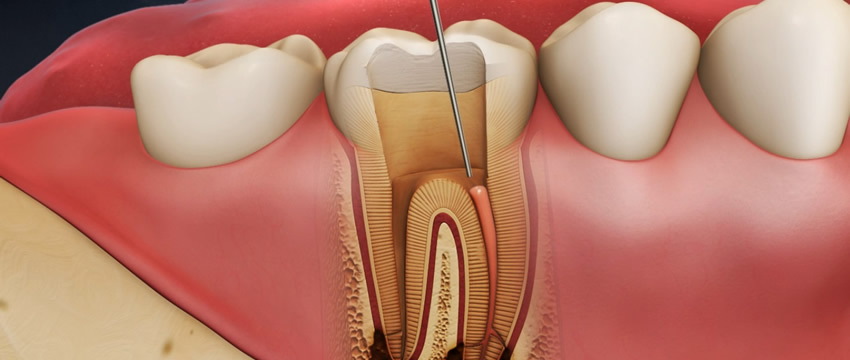
Endodontics, in particular, is the main science in which root canal treatments are performed. Currently, root canal treatment is performed in one session for live teeth, and for teeth that have lost their vitality, it is usually performed in two sessions.
About the Anatomy of Teeth
The part of the tooth that appears in the mouth is called the crown, the part that does not appear in the mouth, and the part that remains in the bone is also called the root. Our tooth consists of several layers. The outermost part of the crown, that is, the part that is seen in our mouth, is called enamel. A cementum layer covers the root part of our tooth that is under the gum and surrounded by bone. There is also a dentin layer under the enamel and cementum layers of the tooth. The peculiarity of dentin is that it is the largest layer of the tooth and, unlike the enamel layer, houses nerve endings. With this feature, it plays a role in the mechanism of pain.
There is a dental pulp under the dentin layer. In this part, the vessels and nerves of the tooth are located. The pulp plays an important role during the eruption and development of the tooth. In addition, it also communicates to us the problems faced by our teeth with the pain mechanism after tooth extraction.
How Is the Pulp Inflamed?
Every person has bacteria in the oral cavity. Bacteria combine with many foods we take to form acids in our mouth. If we cannot remove these formed acids from our mouth, these substances damage the enamel and cause caries to form on the enamel layer. If the caries formed on the enamel are not treated, they pass to the dentin layer, which is under the enamel layer. Although the dentin layer stimulates us through pain, if the resulting caries is not treated again, this time the microorganisms move towards the pulp. At this time, pulp activates various ways to protect itself. One of these ways is to stimulate us through pain, but if we don’t get our teeth treated again, after a while, microorganisms destroy the vessels and nerves in the pulp, causing inflammation.
Another way to cause inflammation in the pulp is through traumas. A blow to the tooth can cause a rupture of the vessels and nerves entering the root of the tooth from the root end, thereby causing the tooth to lose its vitality. The addition of microorganisms by any means in this case causes inflammation of the pulp. Another way to infect the pulp is the presence of a long-term periodontal (gum and surrounding) disease around the tooth.
How to Understand That a Tooth Is Infected?
Toothache that occurs during the consumption of cold and hot food, and the sensitivity of the teeth that is felt can be a harbinger of the onset of inflammation. These signs of inflammation can also include excessive color changes that occur in the teeth. In addition, in teeth where caries reaches up to the pulp, but is not treated, the infection goes from the tip of the root to the jawbone and can cause small, large bumps on the face. In this case, the fight against infection, the actions of the dentist, as well as the use of antibiotics, can be applied. The general opinion is that the tooth that forms a swelling on the face should be pulled out after the swelling has gone down, but this is a very old thought. At this point, even the teeth that cause infections can be kept in the mouth by performing root canal treatment, and this tooth can serve you for years like a healthy tooth.
What are the Stages of Root Canal Treatment?
1. Determination of the problem tooth by taking radiography.
2. If the tooth is alive, local anesthesia is performed to eliminate sensitivity in the tooth and surrounding tissues.
3. Cleaning caries from the enamel and dentin layers of the tooth, creating a cavity in which the pulp will be reached.
4. Determination of the working length using electronic instruments and confirmation by radiography.
5. Destruction and removal of infected dentin layers and microorganisms in the root canal using rotary tool systems.
6. Destruction of microorganisms with various root canal disinfectants when using rotary tool systems in root canals.
7. If the tooth is not alive when starting root canal treatment, it should be waited for a certain period of time with a canal antiseptic to be placed in the root canal and the root blood should be filled at the next meeting.
After root canal treatment, the relationship of the tooth with the surrounding tissues is interrupted so that the infection does not occur again, and if there is damage to the surrounding tissues of the tooth, it is aimed to repair it.
For today, the success rate of these treatments, which are applied with the right treatment method, reaches 90%.
Apply Now for a healthy smile
Our Health Consultants Are Waiting For You… Fill Out the Form Immediately, Take Advantage of Discounts…



